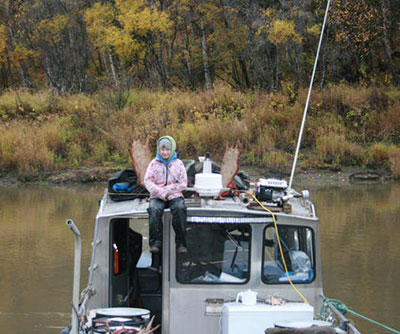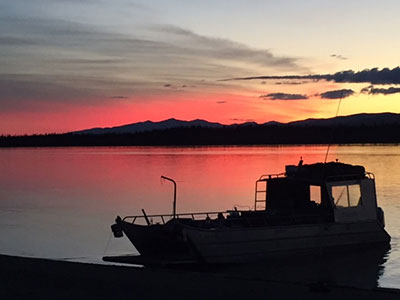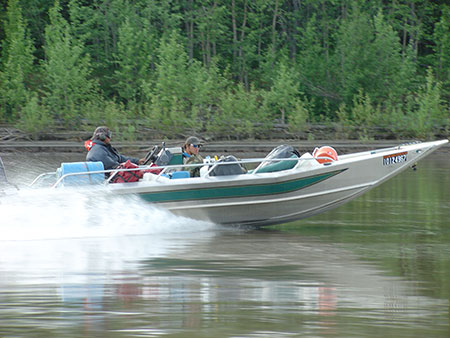Alaska Fish & Wildlife News
May 2019
Safe Boating in Alaska

In recognition of National Safe Boating Week 2019, May 18-24, the Alaska Department of Fish and Game and the Coast Guard and Coast Guard Auxiliary across Alaska are encouraging and promoting safe boating practices.
The National Safe Boating Week campaign is a public outreach effort held annually during the week leading up to Memorial Day weekend and is designed to help reduce boating fatalities and accidents by generating awareness on the waterways in The Last Frontier.
“Boating safety is of paramount importance,” said Mr. Paul Webb, Coast Guard District 17 search and rescue specialist. “With the ever-changing weather in Alaska the only thing that we have control over is how we prepare. Preparing for a worst case scenario grants you better chance of survival and allows the Coast Guard valuable time that you may not otherwise have.”
In 2018 the Coast Guard in Alaska saved 260 lives, assisted 897 people and saved more than $800,000 worth of property.
1. Wear a life jacket; they save lives. In Alaska, boaters are required to have one Coast Guard-approved life jacket for each person aboard their vessel, and they must be in serviceable condition. Persons 13 years of age and younger are required by law to wear a life jacket at all times when in an open boat, on the deck of a boat or when waterskiing.

2. File a float plan before you get underway detailing your trip to aid rescuers in the event you are overdue. Sample float plans can be found at the Coast Guard Auxiliary website.
3. Take multiple forms of communication devices and extra batteries and chargers. Always remember, VHF-FM radio is the primary communications network for the maritime boating community. Enabling the Digital Selective Calling features on your VHF-FM marine radio can broadcast your location and information to every boat within range in an emergency. Also consider a personal emergency beacon, and ensure it is registered with the National Oceanic and Atmospheric Administration at http://www.sarsat.noaa.gov/beacon.html.
4. Check all required safety equipment to be sure it is in good working order. Vessel safety checks by the Coast Guard Auxiliary are free. Trained examiners help boaters review their equipment and give advice about how to improve safety.
5. Check the weather. Be sure to look at the immediate weather forecast as well as the extended forecast; weather can change in Alaska in a matter of hours. Be prepared for it. The National Weather Service offers local and statewide current and extended marine weather forecasts on their website, which are broadcast on VHF marine-band radios.

6. Dress for the water temperature. Though the air may be warming up, the water is still cold and does not rise above low 50s even at the height of summer. Wet suits and dry suits offer protection against hypothermia in the event of immersion in the water. Thermal protection against the effects of cold-water shock can save your life.
7. Boat sober. Never boat under the influence of drugs or alcohol.
Find out more about Vessel Safety Checks For more information on boating responsibly Additional information on boating safety and resourcesAnyone interested in interviewing a spokesperson about boating safety during National Safe Boating Week should contact Petty Officer 1st Class Nate Littlejohn at 907-428-4140.
Petty Officer 1st Class Jon-Paul Rios works with Coast Guard District 17 External Affairs.
Subscribe to be notified about new issues
Receive a monthly notice about new issues and articles.
